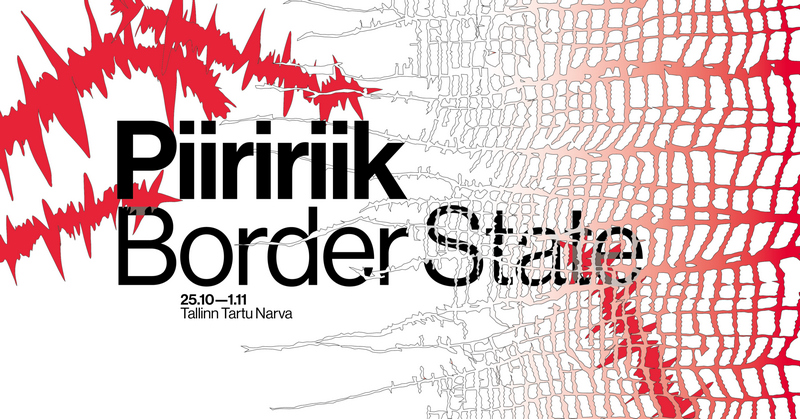
Borders are places of confusion, uncertainty and, often, danger, and in this context concerts such as the ones previously discussed at AFEKT 2023 – where most works had strong similarities while one or two were markedly different – raised related questions. Is such similarity attractive and important because it suggests solidarity? Or is the voice that is different – what we might call the “border state” voice – more appealing and significant because it says something unique and vital that others do not, cannot, or will not say?
Minna Leinonen, in an otherwise rather underwhelming recital by Taavi Orro and Robert Fleitz, encapsulated this kind of division in a way that was engaging and fun in her piece for clarinet and fixed media Pheme. Flamboyant vocal tics, noises and splutterances were echoed (or possibly instigated) by the electronics, both gradually turning pitched and forming so close a duet it was initially as if we were hearing two parallel renditions of the same thing. The most compelling aspect, though, was how Leinonen subsequently caused them to diverge while still retaining the already-established close connection, in a sonic celebration of similarity and difference.
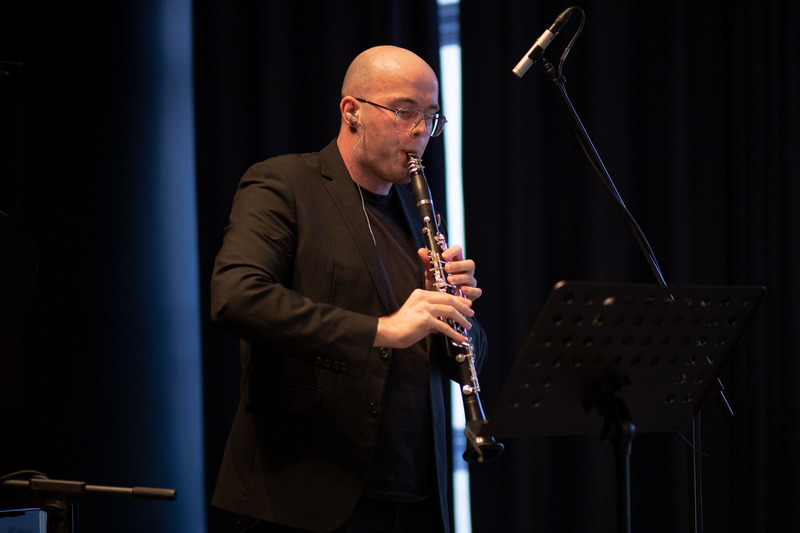
Monika Mattiesen, AFEKT’s artistic director, tapped into a comparable duality in her new work Pesas [In the Nest], premièred by violinist Sarah Saviet and pianist Joe Houston. The idea of a nest suggests safety and protection, yet in the first part of the work there was a real sense of plunging vertiginously into a threatening, overwhelming environment. This found its counterpart in what followed, a calm repose, followed by a seemingly ever more rapid ascent, ending stratospherically high. Helena Tulve‘s Awe, also a first performance, seemed for a time to be content to roam around a space devoid of direction or focus. This wasn’t due to being dramatically inert, but more due to a willingness, perhaps a compulsion, to never venture too far from, and keep returning to, its place of origin. However, this turned out to be merely a patient, contemplative preamble for the unexpected emergence and rapid blossoming of a microtonal song with rich decorative accompaniment. It was a genuinely lovely surprise to have suddenly arrived at this new place of focused, outward expression, pushing even further into polarised extremes at its end.
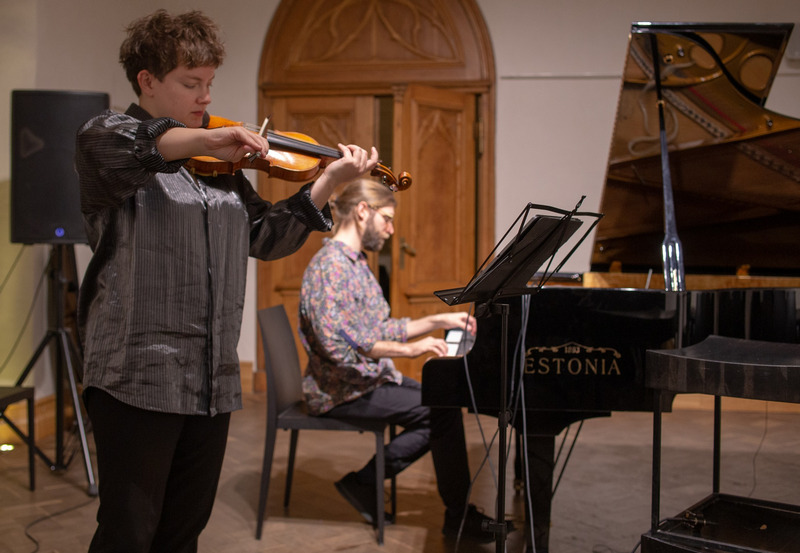
It’s perhaps interesting to note that both of these recitals, which took place one after the other, closed with music that went far beyond what one usually experiences in terms of full-blown irritation. Orro and Fleitz ended with Sonata “Plexus” by Latvian composer Platon Buravicky, a piece that progressed (if that’s the right word) from empty ebullience through mildly pungent cheese to a level of mindless extroversion that suggested a mad, methed-up Milhaud. Saviet and Houston closed with Taste, a collaboration between Rebecca Saunders and Enno Poppe. Despite the pedigree, Taste was a catastrophe, in which the violin’s material, consistently serious, interesting and elevated, often rather moving, was continually undercut and countermanded by crude, aimless brutalism from the piano. Perhaps if both of these pieces hadn’t been so excessively over-extended the effect might have been mitigated, but as it was, they could hardly have been more aggressively annoying.
Celebrating their 20th birthday at this year’s AFEKT was Ensemble U:, Estonia’s premier contemporary music group. Their concert featured another unique, “border state” voice, one of Estonia’s most consistently radical, Tatjana Kozlova-Johannes. Her new piece Ainult õhk [Just air], receiving its first performance, seemed at first to have abandoned the kind of intense, avant-lyricism that typifies her work. Instead, tiny, vaporous, glittering phrases permeated the score, like the result of a source that had been heavily refracted and filtered.
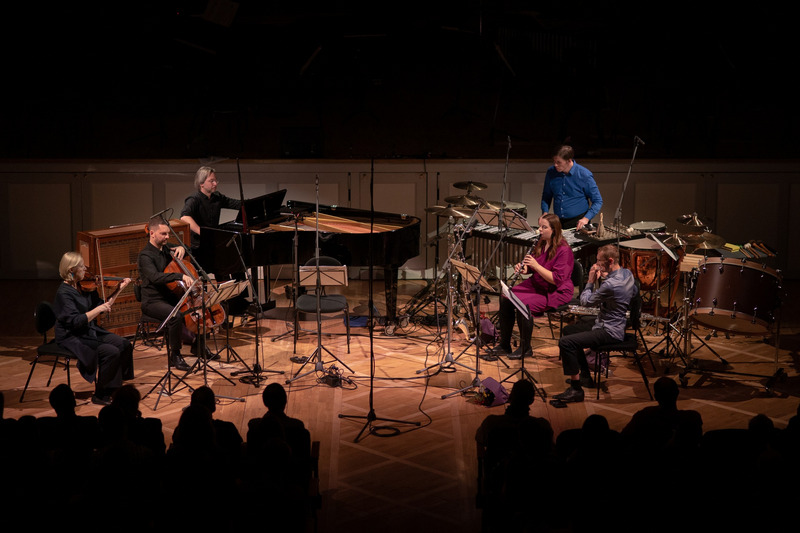
Yet the impression of a potent inner song soon became apparent, materialising in breathy hints and fragile, sustained tones that became channelled into a decorative form of transfixed rapture. This was answered (contradicted?) by a lengthy bass clarinet solo that was agile but, in this context, strikingly solemn. Perhaps here, too, was that same duality, contrasting superficial prettiness with a deeper, darker and more urgent music. It was yet another example of the considerable emotive weight with which Kozlova-Johannes imbues her music, and which sets her apart from most Estonian composers.
Borders are also places where familiarity breaks down and reality becomes a complex amalgam of disparate notions of certainty. This made its presence felt in a concert given by the “Harmonic Space Orchestra” in the Swedish St. Michael’s Church, focusing on music by Marc Sabat and Catherine Lamb. It seemed highly appropriate that this event took place in a church, as for some time now the work of Lamb and Sabat (Lamb especially), espousing an adherence to alternative approaches to pitch and harmony, has increasingly taken on the qualities of a cult. It would be nice if the considerable amount of effort required to compose and perform their work resulted in correspondingly powerful, immediate music, whereas the dismal reality is that it tends to reside in an enervated place of boring, lobotomised dawdling, made yet more irritating by a choking fug of pseudo-profundity. Their brand of what we might call ‘specious counterpoint’ is not, as it apperas, music on the edges of familiarity and convention but, rather, existing in a bleak hinterland of desperately and unavoidably limited potential. Not so much “border state” as fringe science.
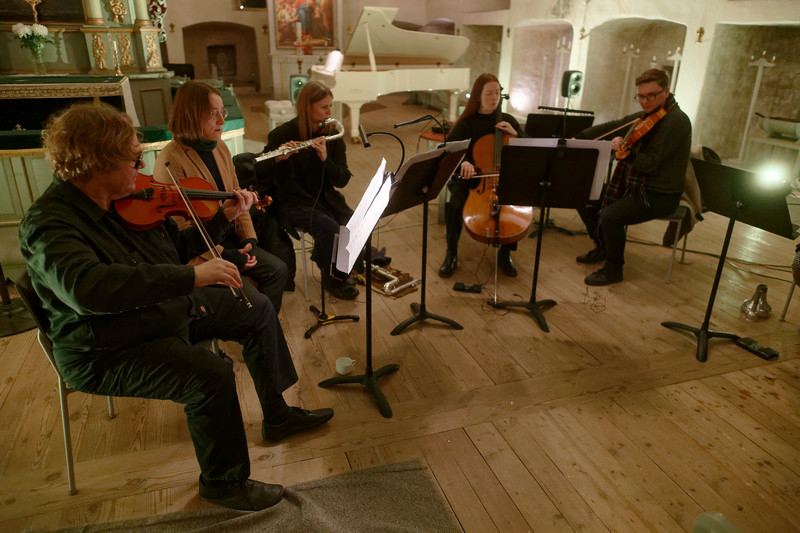
Fortunately, the concert included smaller-scale music for piano solo (performed by Thomas Nicholson) that, despite its relative brevity, spoke with infinitely greater immediacy, interest and potency. Sabat partially redeemed himself in his short Nocturne, where a simple idea spiralled hypnotically round at different speeds. Most outstanding of all were two works by Liisa Hirsch. Page 1 presented what seemed to be momentary glimpses of larger and longer ideas, each seemingly connected and disconnected from the others, even when they later began to expand and overlap. Vseva’s Light turned inward, exploring limpid arpeggios with something searching about them, as if the music were discreetly trying to find itself, in an atmosphere of calm beauty.
In a similar way to the performances by Ukho Ensemble Kyiv and ERSO, here again was a concert defined for the most part by the nature and similarity of its music. It raised another connotation of the festival theme: borders define communities and cultures, and there was an impression here of concerts acting akin to ‘nations’ within the wider music world, fostering discrete attitudes and approaches to composition.
